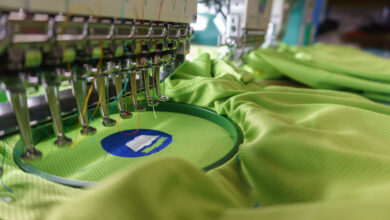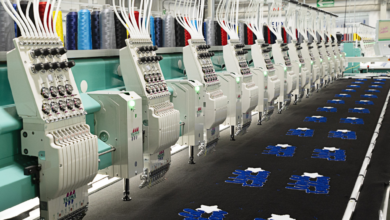Why are there loops in my stitches?
Your embroidery machine is steadily stitching out the prettiest design when all of a sudden, disaster strikes. A series of loose thread loops appear on the top of the design, ruining the design and demanding the time it takes to remove it and start over again. But how do you avoid the looping with the next run? First, let’s take a look at what can cause the thread to loop in the first place.
Is it the thread? Not likely. Make sure you are using a top-quality embroidery thread and storing it correctly, away from dust and severe sunlight. A special effects thread such as metallic may perform best in designs with slightly longer stitches and less density and can be encouraged to perform best if the thread comes off the spool horizontally and/or at a controlled speed.
Is it the needle? Probably not. Not if you are changing your needles regularly, so there is no chance that your needle is dull or damaged.
Is it the bobbin? Mmm, no. Not as long as you are using a good quality bobbin with consistent tension. Usually, pre-wound bobbins will maintain consistency best.
Is it my machine setting? Bingo! In the majority of cases, looping is caused by poor tensioning. We cannot emphasize enough the importance of proper tensioning before beginning every project. Improper tensioning can occur with your top thread, in your bobbin case, or even in both places. There are tools to help, and a sample stitch out to see where you stand before you begin.
Proper tensioning, which will avoid looping, is a balance between top and bottom thread. Always begin with your bobbin thread first, then adjust the top thread. There are tools to help. A top thread tension tool will measure your top thread tension, while a bobbin thread tension gauge will measure the tension of your bobbin thread. A relatively new device to the market, a digital tension gauge, will measure both and is worth its weight in gold!
Thread manufacturers will provide recommended tension settings for the best results, and there is a stitch out that serves as a final test. Stitch out a satin stitch column, then look at it from the reverse side of the stitch out. You will see three distinct columns of stitches: top thread on the left and right with bobbin thread in the center. Each should take up an equal third in width, with a straight line between them.
If the rows are unequal, or there is a jagged appearance between them, set your bobbin case tension screw first. If that does not rectify the issue, increase your top thread tension by small increments. Your best defense against looping is a machine that has been tested and set to proper tensions.



